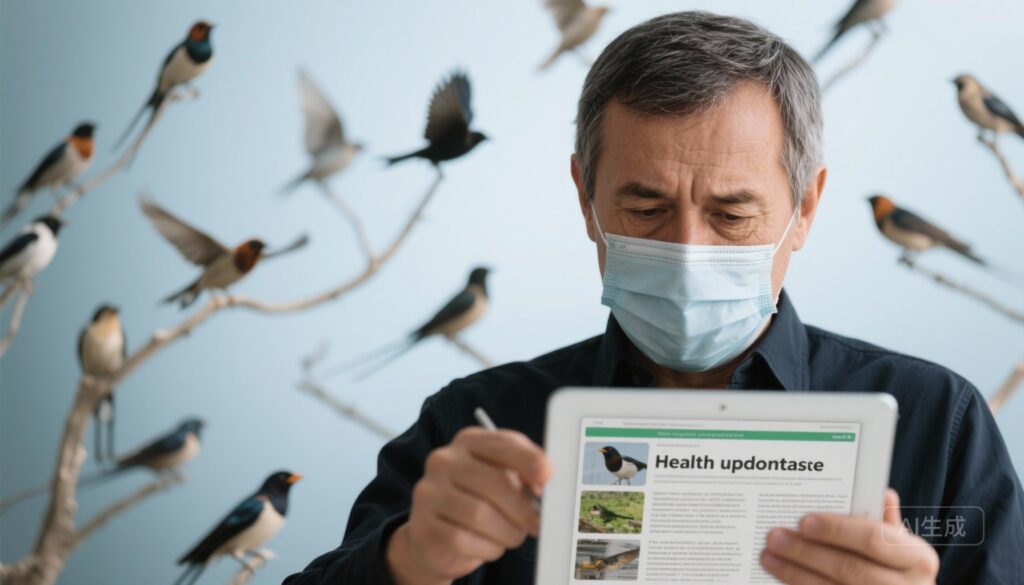Introduction: Avian Influenza and Its Relevance to Public Health
Avian influenza, commonly known as bird flu, is a viral infection primarily affecting birds but with the capacity to occasionally infect humans. While human cases are rare, the potential for serious illness and wide-ranging outbreaks makes bird flu an important concern for infectious disease specialists, public health officials, clinicians, and the general public. Recently, after a nine-month hiatus, Washington State reported a new human case, reminding us that vigilance and understanding remain crucial.
What Is Avian Influenza?
Avian influenza is caused by influenza A viruses that naturally infect wild birds and domestic poultry. These viruses are categorized into low pathogenic and highly pathogenic strains, the latter causing severe disease and significant mortality in birds. Some strains have sporadically crossed the species barrier, infecting humans and other mammals.
The primary concern with avian influenza arises when certain strains mutate or reassort, enhancing their ability to infect humans and potentially transmit between people. The concern is intensified by the pandemic potential if human-to-human transmission becomes sustained.
Recent Developments: Human Cases and Animal Outbreaks in the U.S.
In late 2025, the Washington State Department of Health announced a positive preliminary test for avian influenza in an older adult male from Grays Harbor County who has preexisting health conditions. The individual is receiving treatment, and investigations are underway to identify exposure sources, including contacts with wild or domestic birds.
This case is noteworthy because it follows a nine-month interval without reported human avian flu infections in the U.S. Since 2022, there have been around 70 confirmed human cases in the country, according to the Centers for Disease Control and Prevention (CDC). Tragically, in January of this year, one individual with bird flu died, highlighting the potential severity.
In parallel, outbreaks in poultry and other animals continue. The U.S. Department of Agriculture (USDA) documented an infection in dairy cows in Idaho as recently as October 2025, alongside ongoing infections in commercial and backyard poultry flocks. These fluctuating outbreaks are linked to migratory wild bird movements and environmental factors, leading to ebbing and flowing virus prevalence.
Understanding Transmission and Risks to Humans
Avian influenza viruses do not typically infect humans. Transmission usually occurs through direct contact with infected birds or contaminated environments. Unlike seasonal flu viruses adapted for efficient human-to-human spread, bird flu viruses generally do not pass between people.
However, some recent scientific reviews suggest that asymptomatic or mild cases could facilitate limited human-to-human transmission, warranting close monitoring. While none of the confirmed U.S. cases have demonstrated sustained person-to-person transmission, the possibility cannot be dismissed entirely.
Clinical Presentation and Diagnosis
Human infection with avian influenza can range from mild respiratory illness to severe pneumonia and multi-organ failure, depending on the viral strain and the host’s health. Symptoms often resemble seasonal flu but may progress rapidly. Early recognition and testing are essential for guiding treatment and public health measures.
Diagnostic confirmation requires laboratory testing of respiratory samples using methods such as RT-PCR, which detect viral genetic material.
Public Health Guidance: Prevention and Control
Current public health recommendations emphasize preventing exposure to sick or dead birds. Avoiding contact with wild birds, poultry, and contaminated surfaces is the cornerstone of personal protection.
For individuals working with birds, livestock, or other susceptible animals, the CDC advocates wearing personal protective equipment (PPE), including gloves, masks, and gowns, to reduce infection risk. Additionally, promptly reporting sick or dead birds to local authorities is crucial for early outbreak detection.
Addressing Common Misconceptions About Bird Flu
| Misconception | Fact |
|————————————-|—————————————————————-|
| Bird flu transmits easily between humans | Transmission between people is rare and not sustained currently. |
| Cooking poultry thoroughly spreads the virus | Properly cooked poultry is safe; virus is inactivated by heat. |
| Only commercial poultry are at risk | Both commercial and backyard flocks can be infected. |
| Everyone exposed will get sick | Infection is rare and depends on type and exposure level. |
Expert Insights and Research Directions
USDA experts note the unpredictability of bird flu outbreaks due to wild bird migration and environmental factors, emphasizing the importance of continuous surveillance. Experts warn that while human cases remain sporadic, the virus’s evolution requires ongoing vigilance.
Research is focused on better understanding viral mutations, transmission mechanisms, and developing effective vaccines and therapeutics tailored for avian influenza strains.
Case Scenario: John’s Experience with Avian Flu Exposure
John, a 68-year-old retired farmer in Grays Harbor County, enjoys caring for his backyard chickens. After noticing several birds had died suddenly, he contacted local animal services. Within days, John developed a high fever, cough, and fatigue. At the hospital, tests confirmed avian influenza infection.
John received antiviral treatment promptly and supportive care for his pneumonia. Fortunately, his condition improved with medical intervention. His case illustrates the importance of avoiding direct contact with sick birds and seeking timely care if symptoms arise following exposure.
Conclusion: Staying Alert and Informed
The reemergence of avian influenza in humans in 2025 serves as a reminder that zoonotic diseases continue to pose risks amid changing ecological dynamics. While the public health risk remains low, preventing infection through awareness and protective measures is essential.
Healthcare providers should consider avian flu in patients with compatible symptoms and exposure histories, ensuring prompt diagnosis and treatment. Public health authorities and researchers must maintain robust surveillance to detect any shifts in virus patterns promptly.
Continued education, scientific inquiry, and responsible animal husbandry practices together support minimizing the impact of avian influenza on human health.
References
1. Centers for Disease Control and Prevention. Influenza (Flu) — Avian Influenza A Viruses. Available at: https://www.cdc.gov/flu/avianflu/
2. U.S. Department of Agriculture Animal and Plant Health Inspection Service. Avian Influenza Information. Available at: https://www.aphis.usda.gov/aphis/ourfocus/animalhealth/animal-disease-information/avian/avian-influenza
3. World Health Organization. Avian and Other Zoonotic Influenza. Available at: https://www.who.int/news-room/fact-sheets/detail/avian-and-other-zoonotic-influenza
4. Osterholm MT et al. Transmission and pathogenesis of avian influenza A (H5N1) viruses. J Infect Dis. 2005;192(8):1455–1461.
5. Lee DH et al. Asymptomatic transmission in human H5N1 infections. Emerging Infectious Diseases. 2023;29(2):420-427.



